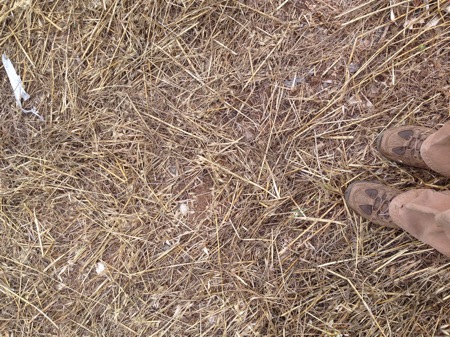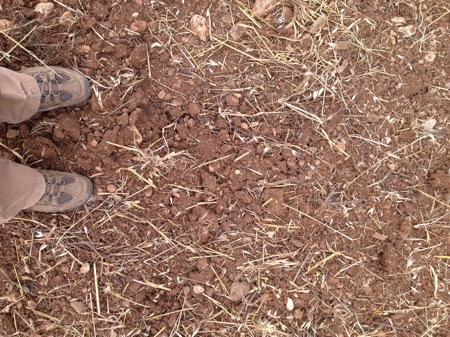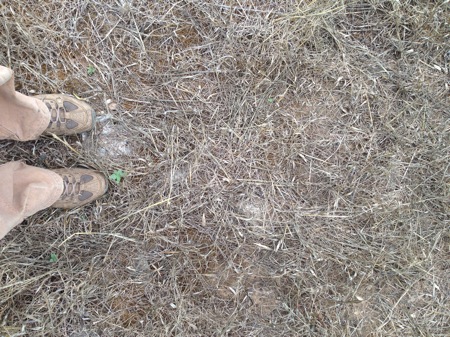A good archaeologist once told me that excavation required hands in the dirt. The feel of the soil, the sound of the trowel in the matrix, and the appearance of each layer of strata combined to organize archaeological space.
A survey archaeologist spends much less time with dirt between his or her fingers and no time at all with the ting or tang of the trowel (depending on the brand). We spend our days walking across units and feeling the differences in soil with our boots.
A field plowed several seasons ago feels different:

From a field plowed this season:

The loose soil in a field with cobbles and coarse gravel feels very different:

from a field hard packed and baked in the summer sun:

So as we spent the day on the Western Argolid Regional Project mapping units for our field teams to walk, I thought as much with my feet as my eyes.
For the non-archaeologist, does the difference in the soil impact your survery?
It does! A plowed field is generally better for survey: recently plowed fields have fewer weeds and so more of the ground surface is visible, and the turning over of the soil brings additional artifacts in the top soil to the ground surface.